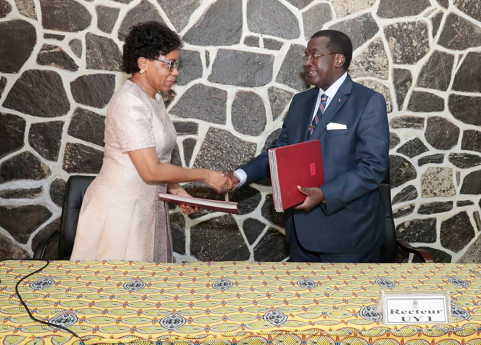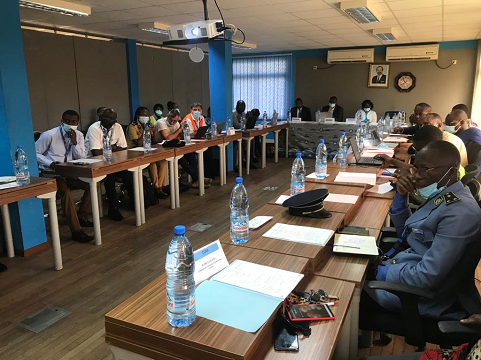Aviation and the environment
AVIATION AND THE ENVIRONMENT
The issue of air transportation and the environment can be integrated directly or indirectly especially when it comes to measuring and/or responding to the challenges and impact of air transportation to the environment. This can be analyzed in terms of noise, air pollution, and climate change.
It also explains the challenges policy makers are facing in terms of sustainable development, i.e, focusing on the importance of balancing the industry's economic, social and environmental costs and benefits, both for people living now and for future generations. Therefore, in the long term, much can be and is being done to improve aviation’s sustainability including: making decisions based on optimizing the balance between social, economic and environmental imperatives as well as inter-State collaboration to achieve a shared vision for more long lasting aviation industry. The demand for air transport is continually growing and, if this is to be met with all the attendant benefits, then, the public will be bound to incur the effects of noise, pollution, climate change, risk, resource use, etc. However, in responding to the above, a range of policy options based on regulatory, market-based and voluntary approaches are under consideration in other to meet the challenges resulting from the adverse effects of aviation activities on the environment.
Currently, aviation accounts for 2% of global CO2 emissions and projections of the Inter-Governmental Panel for Climate Change (IPCC) indicate a rise to 3% by 2050. It is due to this concern that the International Civil Aviation Organisation (ICAO) came out with the Resolution A37-19 of 2010, where States are expected to voluntarily submit an action plan for their States geared towards the reduction of CO2 emissions. More than 93% of the member States have already finalized and submitted the said action plans including Cameroon.
In this perspective, Cameroon hosted two international seminars that were jointly organised by the ICAO-EU and the African Civil Aviation Commission (AFCAC) on issues concerning the environment within the aviation sector. These seminars brought together participants from several African countries, namely; Congo, Chad, Equatorial Guinea, Central African Republic, Burkina Faso, Gabon, Angola, Kenya, Nigeria, Sao Tome and Principe, etc, etc. The objectives of the seminars were to raise awareness amongst participants on CO2 mitigation from International Aviation. The first seminar took place on the11th through the 13th of June 2014, and the second on 3rd – 6th of February 2015. Both seminars served as a booster to the Management of the Cameroon Civil Aviation Authority (CCAA) so much so that a Committee was put in place by Decision n01125/D/CCAA/DG/DTAS/SAE of 23rd October 2014 relating to the creation of a Committee in charge of elaborating Cameroon’s action plan on CO2 emissions reduction. The Committee constituted of experts from both the CCAA and the following stakeholders:
-
A representative from the Ministry of Transport (MINT);
-
A representative from the Ministry of Environment, Nature protection and Sustainable Development (MINEPDED);
-
A representative from Agency for Air Navigation Security for Africa and Madagascar (ASECNA);
-
A representative from Aéroport du Cameroun ADC;
-
A representative from Cameroon Airlines Corporation (Camair-Co);
-
A representative from the Refined Hydrocarbon Services (HRS)
It is important to note that Cameroon submitted her action plan last December 30th 2015 to the ICAO as was required. The CO2 mitigation measures that were taken into consideration by the Committee from the list of measures provided by ICAO in the guidance document during the elaboration of the said action plan were:
-
Improvements in Air Traffic Management (ATM) and related infrastructure use;
-
More efficient Operations;
-
Airport Improvements;
-
Technological development related to aircraft and,
-
Regulatory measures.
Some aspects of the above measures have already been put in place by Camair-Co and ADC through the implementation of the following:
-
Replacing the board in-flight document from the paper version to an electronic version. This action is currently on board their aircrafts, but the cut-off cannot take place abruptly for security reasons.
-
Camair-Co has invested in the purchase of new aircraft and has put in service 2 MA60 aircraft but the old apparatus are still operational.
-
Furthermore, Camair-Co has put in place a Department in charge of the follow up and analyzes of its fuel consumption in a bid to control consumption and to reduce CO2 emissions.
-
ADC has also constructed a sling at the Douala international airport which is in line with the “Airport Improvement” measures. Below is a cross section of the runway that was under rehabilitation at the Douala international airport as mentioned above.
Apart from the CO2 emissions reduction project, the CCAA has also taken measures to carry out three important environmental audits at the Douala, Garoua and Yaounde-Nsimalen International airports respectively as from January 2017. The Terms of References (TORs) for the said audits have been submitted to the MINEPDED for validation as required. The main objectives of this measure are to put in place a concrete Environmental Management System (EMS) at the international airports, as well as develop an Environmental Policy for the aviation sector in Cameroon. This will also go a long way to render the airport environment viable and sustainable.
Several other environmental actions and/or projects such as bird control, risk/impact assessments at the airports, etc are being anticipated by the CCAA in other to meet the challenges of aviation activities and their effects on the surrounding environment.
By NDUNGO Olive
Environmental Research Assistant – CCAA











